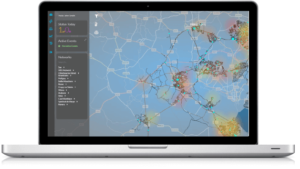Water utilities increasingly rely on bulk water transfers to meet the growing demand for clean, safe water. These arrangements, where one utility purchases water from another, provide a lifeline in regions prone to drought or seasonal supply shortages. However, they also introduce significant challenges, particularly in maintaining consistent water quality across the supply chain.
Contaminant tracing and rapid management are critical to protecting public health and ensuring water remains safe for consumption. Water quality managers must navigate a complex landscape of inter-utility agreements, varying standards, and the potential for contaminants to arise during storage or transit. Addressing these challenges requires a combination of innovative technology, robust quality agreements, and clear communication strategies.
The Unique Challenges of Bulk Water Transfers
When water is transported between utilities, it often passes through multiple reservoirs, pipelines, and treatment facilities before reaching end users. Each stage in this process presents opportunities for contaminants to infiltrate the supply. Common risks include:
- Microbial Contamination: Introduced through aging infrastructure or cross-contamination during transit.
- Chemical Contaminants: Such as nitrates or heavy metals that leach from pipeline materials.
- Physical Debris: Resulting from sediment disturbance or poorly maintained storage tanks.
Detecting and managing contaminants quickly is paramount. Delayed responses can lead to public health risks, erosion of trust, and significant reputational and financial consequences for utilities.
Leveraging Cutting-Edge Technology for Contaminant Tracing
Real-time monitoring systems like the Intellisonde from Intellitect are revolutionising how utilities detect and manage water quality issues. Designed for deployment within distribution networks, Intellisonde provides continuous, multi-parameter monitoring of critical water quality metrics, including pH, chlorine levels, turbidity, and temperature. In addition to this, the Intellisonde range is also able to monitor flows and pressures entering the supply zones, allowing for the creation of virtual DMAs and supporting water balancing and leak detection.
Unlike traditional testing methods that rely on manual sampling and lab analysis, real-time sensors offer several advantages:
- Rapid Contaminant Identification: Utilities can detect deviations in water quality as they occur, enabling immediate investigation and remediation.
- Data-Driven Insights: Continuous monitoring provides a comprehensive view of water quality trends, helping utilities pinpoint contamination sources with precision.
- Proactive Management: Utilities can identify potential risks before they escalate, minimising disruptions and ensuring regulatory compliance.
- Reduced maintenance: The Intellisonde does not need regular calibration and is also requires no mains power significantly reducing the costs of monitoring
By integrating devices like Intellisonde into their bulk water transfer systems, utilities can achieve greater confidence in water quality and reduce the likelihood of contamination incidents.
Intellisonde provides continuous, multi-parameter monitoring of critical water quality metrics, including pH, chlorine levels, turbidity, and temperature. In addition to this, the Intellisonde range is also able to monitor flows and pressures entering the supply zones, allowing for the creation of virtual DMAs and supporting water balancing and leak detection.
Inter-Utility Quality Agreements
Establishing robust inter-utility agreements is another crucial step in maintaining water quality. These agreements should outline:
- Water Quality Standards: A shared understanding of acceptable parameters for microbial, chemical, and physical contaminants.
- Testing Protocols: Consistent methodologies for water sampling and analysis across all parties.
- Responsibility Assignments: Clear delineation of roles for addressing contamination events.
Such agreements create accountability and foster collaboration between utilities, ensuring a seamless approach to managing water quality.
Effective Communication and Collaboration
Communication plays a pivotal role in mitigating contamination risks. Utilities should implement:
- Real-Time Alerts: Systems that notify stakeholders of potential contamination events immediately.
- Regular Reporting: Transparent sharing of water quality data between utilities to build trust and enable coordinated action.
- Public Education Campaigns: Informing consumers about water quality safeguards can enhance public confidence in bulk transfer arrangements.
Investing in robust communication strategies ensures that all parties remain aligned, and any potential risks are addressed swiftly and effectively.

The Need for Rapid Contaminant Tracing
Bulk water transfers often span vast geographic areas, making rapid identification of contamination sources essential. Advanced technologies like real-time sensors and geographic information systems (GIS) can accelerate this process by enabling utilities to trace contaminants back to their origin.
For instance, if microbial contamination is detected at a distribution point, utilities equipped with real-time monitoring systems can quickly identify the affected pipeline segment or storage facility. This rapid response capability minimises public health risks and reduces the time and resources needed for remediation.
A Proactive Approach to Bulk Water Transfers
As demand for bulk water transfers grows, water utilities must adopt a proactive approach to managing contamination risks. By integrating advanced monitoring technologies like Intellisonde, formalising inter-utility agreements, and enhancing communication strategies, utilities can safeguard public health while ensuring consistent water quality across the supply chain.
In a region where water is both a vital resource and a limited commodity, these efforts are essential to building a resilient and reliable water supply network. By prioritising innovation and collaboration, Australian and New Zealand utilities can set a global standard for excellence in water quality management.
Connect with us today to discuss our water quality monitoring solutions.









